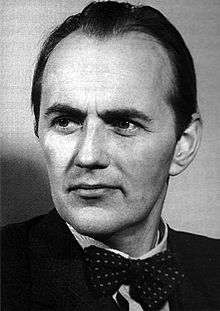Rehn–Meidner model
The Rehn–Meidner model is an economic and wage policy model developed in 1951 by two economists at the research department of the Swedish Trade Union Confederation (LO), Gösta Rehn and Rudolf Meidner. The four main goals to be achieved were:
- Low inflation
- Full employment
- High growth
- Income equality


The model is based upon an interaction between Keynesian fiscal economics, real wage growth, active labour market policies and state intervention. The purpose was to create a positive spiral as part of the business cycle, in accordance with Keynesian theory, as the creation of an expansive welfare state and public investment meant to maintain domestic demand over economic cycles ensured security, safety and stability to labour, capital, business and consumers. This, in turn, helped to ensure low inflation, by helping to prevent wage-price spirals and thereby strengthened trade unions in demanding rising real wages in line with productivity growth, which, combined with the effects of the welfare state and social programs, led to increased purchasing power and consumer confidence, resulting in rising general demand and an upwards, self-maintaining cycle which led to high growth rates and full employment, fueled by progressive taxation and redistribution of wealth, as that further increased spending power and ensured equality of incomes.
Unprofitable enterprises in the market were to be pushed toward what was known as the solidarity wage policy, with rising real wages in line with productivity growth, forcing them to improve their productive capacity in order to improve profitability, through measures such as structural adjustment as well as robotisation and automation of production, and through more indirect means such as improved working conditions meant to decrease rates of sick-leave and increase productivity. All of this freed labour resources, who were then mobilized in high-productive corporations, by means of active labour market policies, as they benefited from the labour costs comparatively favourable to them and were expanding production as general demand rose when real wages, and thereby purchasing power, increased. This led to soaring profits which were re-invested in improving the productive capacity of those corporations, partly to increase profitability, partly to meet the rising demand, partly because tax incentives favoured long-term investments in e.g. research and development, rather than in capital gains and dividends, and partly in order for these corporations not to become unproductive and thereby risk bankruptcy, ensuring high productivity growth and rising real wages, and thereby full employment and an equal distribution of incomes, whilst inflationary pressures were prevented through an incomes policy of national wage arbitration and central collective bargaining between labour unions, industrial representatives and governments, ensuring real wages did not exceed productivity growth through improving other forms of compensation, such as social benefits, working conditions, working hours and employment security.
Workers Fund
A proposal was discussed in the LO congress of 1971, the Löntagarfonderna,[1] that called for requiring all companies above a certain size to issue new stock shares to workers in order to redistribute the wealth created by the company, this proposal was based on four measures:[2]
- All companies above 50 employees were to issue each year stock amounting to 20% of the year profits
- This stock and the profits entitled would belong to the local unions as long as they did not surpass 20% of the company stock
- New stock could not be sold and will be included as an asset of the workers fund
- The stock dividends will be reinvested in stock of the same company or used for employees training
This part of the model was never fully implemented because of changes in the Swedish government and the frontal opposition of the employers.
See: Employee funds
Outside Sweden
The Rehn-Meidner Model was utilized in somewhat different shapes across the Western world and proved successful in achieving its goals as was shown in the prosperous time of the post-war Golden Age of Capitalism. The model was made possible and nations were incentivized to implement it through the Bretton Woods system, which was the name for the postwar international financial order that regulated currencies, exchange rates and capital flows, partly through the use of mutual capital controls, so as to allow nations to finance their welfare states through the use of progressive taxation without fear of speculative attacks, capital flight, tax evasion and deindustrialization.
